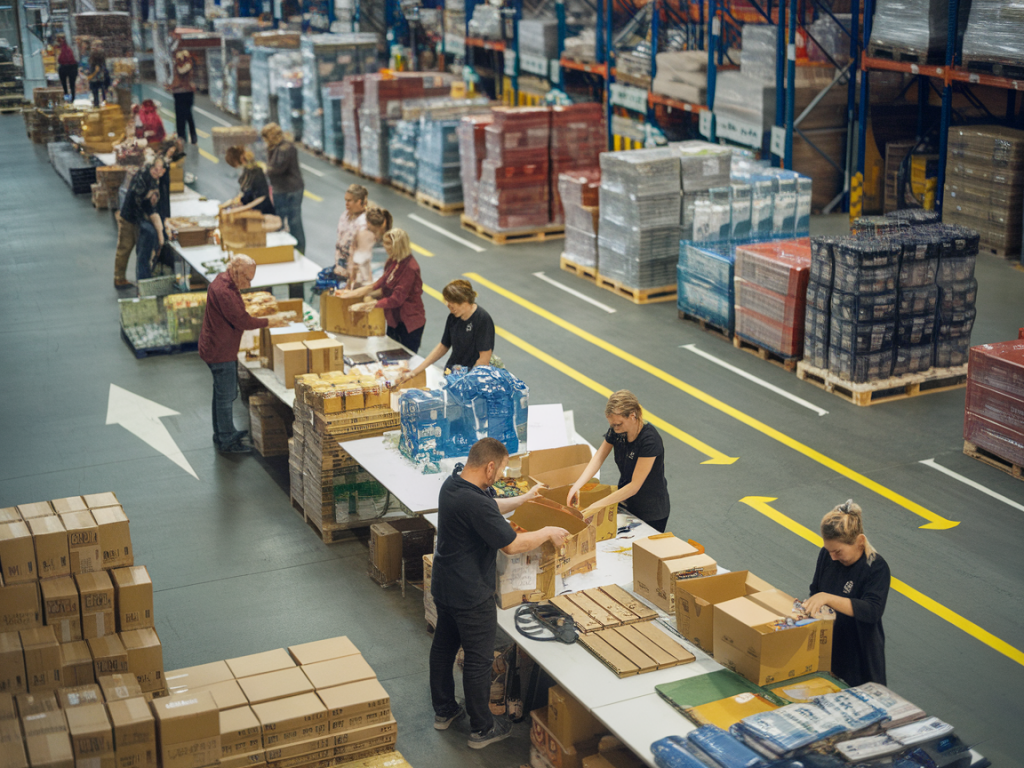
Amazon's Supply Chain: A Case Study in Modern Retail Efficiency
Amazon didn't just change the retail landscape—it completely redefined it. Its relentless focus on customer satisfaction, combined with groundbreaking innovations in logistics and supply chain management, has made it the juggernaut we know today. But what makes Amazon’s supply chain so distinctive, and how can you adapt some of these strategies to your own business? Let me guide you through some of Amazon’s key innovations and show you how they can inspire smarter, more effective practices for your enterprise.
The Power of Automation
If there’s one thing Amazon excels at, it’s speed. The company’s widespread use of automation in order processing and fulfillment is what enables them to deliver products in record time. From robot-assisted warehouses to optimized inventory management systems, Amazon heavily relies on technology to eliminate inefficiencies.
For smaller businesses, full-scale automation might feel overwhelming or unattainable, but you don’t need to start with robots to make a real impact. Begin by identifying repetitive or time-consuming processes in your operations. Is your inventory tracking still manual? Are your order-picking procedures slow? Investing in affordable software tools like inventory management platforms or even basic barcode scanners can dramatically improve your operational flow.
Additionally, Amazon's efforts in predictive analytics—which allow them to project upcoming demand and plan ahead—are more accessible to businesses of all sizes than ever before. Many budget-friendly tech solutions now offer AI-driven forecasting tools, helping you plan for peak periods and avoid overstock or out-of-stock situations.
Putting the Customer First
Amazon’s supply chain is built around one primary objective: delighting the customer. Same-day delivery, free returns, and real-time package tracking are just a few innovations Amazon has introduced to optimize the customer experience.
Ask yourself—how seamless is your customer's journey? Are you prioritizing convenience and transparency? For example, could you offer faster shipping options, even if only regionally? Or, could you provide better communication post-purchase using automated email updates to inform your customers about their order status?
You might not have the infrastructure of Amazon, but that's okay. Even small improvements—such as drastically reducing response time for customer inquiries or simplifying your return policies—can make a substantial difference. Remember, happy customers turn into loyal ones, and loyalty is the foundation of any successful business.
Localizing Fulfillment: The Power of Micro-Warehouses
One of Amazon’s most inventive strategies is its use of regional fulfillment centers, as well as micro-warehouses. By placing inventory closer to the end customer, they’ve mastered the art of cutting down transit times and costs.
You don’t need a global network to implement this idea. Even scaling down the concept to fit your business can yield significant benefits. Could you consider renting a small storage space in a high-demand area, strategically close to your core customer base? This could help you slash delivery times significantly while reducing shipping costs.
Similarly, if physical storage isn’t an option, partnering with local distributors or third-party logistics providers could give you access to a similar advantage. Many companies now offer decentralized distribution models, enabling smaller brands to "think local, act big."
Innovation Through Data
Amazon’s success isn’t just about physical goods moving through supply chains—it’s also driven by an unparalleled mastery of data. From understanding browsing habits to tracking shipping bottlenecks, their whole ecosystem is powered by rich analytics.
In your business, tapping into the power of data doesn’t need to involve complex machine-learning algorithms. Start with the basics. Gather and analyze data from every part of your operations: Which products are selling fastest? Where do you most often encounter delays or inefficiencies? What feedback do customers frequently share?
Surveys, website analytics, and social media monitoring tools can bridge the gap without requiring the resources of a tech giant. Once you identify opportunities from these insights, you can implement targeted changes fast.
For instance, if you notice certain product categories moving slower, perhaps you could test new pricing strategies, run limited-time promotions, or simply reconsider how those items are marketed. Data empowers you to make decisions based on what really works, as opposed to intuition alone.
Innovating with Vendor Collaboration
Amazon didn’t create an empire alone. A crucial part of their supply chain success stems from close collaboration with their vendors and suppliers. From automated inventory replenishment to shared logistics solutions, they cultivate partnerships that drive mutual benefit.
Though your business might not yet be on Amazon's scale, building strong relationships with suppliers can work in your favor. Could you negotiate better terms for faster restocking? Streamline how you share sales data with your providers to ensure better inventory alignment? Or perhaps work with them to share some of the costs of marketing and distribution?
Collaboration, after all, is less about resources and more about trust and communication. Even maintaining open dialogues with your suppliers can uncover new opportunities to cut costs or improve efficiency.
Sustainability as a Long-Term Strategy
In recent years, Amazon has also turned its attention to sustainability, aiming for net-zero carbon emissions and introducing electric delivery trucks. While some may argue this is primarily to ensure customer goodwill, there’s no doubt that eco-conscious practices are becoming a cornerstone of modern business strategy.
For smaller operations, sustainability can go hand in hand with efficiency. Could you implement more eco-friendly packaging to reduce waste? Consolidate shipments to reduce delivery frequency and fuel costs? Not only do these changes adapt your business to future trends, but they also align with the growing environmental expectations of consumers.
Remember, taking small yet deliberate steps toward sustainability can strengthen brand loyalty—especially among younger audiences eager to support purpose-driven businesses.
Adopting a Culture of Continuous Improvement
Finally, if there’s one trait that defines Amazon's approach to innovation, it’s their commitment to continuous improvement. They’re never satisfied with "good enough"—a philosophy that’s led to advancements in every part of their operations.
No matter the size of your business, adopting a similar mindset can yield transformative results. Regularly reevaluate your supply chain practices, solicit feedback from your customers and employees, and actively seek out tools or methods to streamline workflows.
Sometimes even the smallest adjustments, like automating a spreadsheet or rearranging a workspace for better efficiency, can free up enough resources to invest in your next growth phase.
